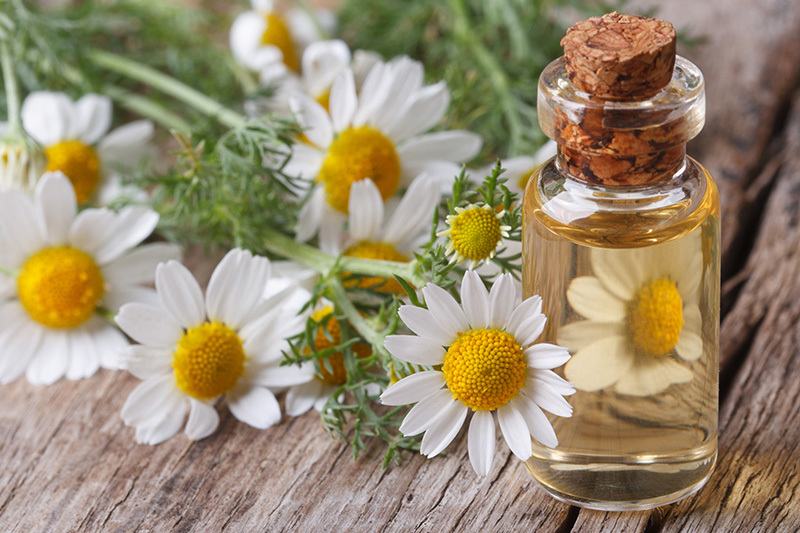Orchid Care Insights: A Practical Guide
Posted on 03/09/2025
Orchid Care Insights: A Practical Guide
Orchids are among the most captivating and diverse families of flowering plants on earth. Their stunning blooms and intricate structures have inspired admiration and fascination for centuries. However, many novice and even experienced plant enthusiasts are often unsure how to keep their orchids thriving. Welcome to your comprehensive and SEO-optimized guide to orchid care. This practical article covers everything--from basic orchid care requirements to advanced tips for keeping orchids healthy and blooming year after year.
Why Orchids Are Special Plants
Orchids (family Orchidaceae) boast more than 25,000 species and countless hybrids, making them one of the largest plant families in the world. Their range extends from tropical rainforests to temperate regions, resulting in a remarkable diversity of forms, colors, and growth habits.
- Exquisite Blooms: Orchid blooms often last weeks or even months, outshining many other houseplants.
- Wide Variety: From popular Phalaenopsis (moth orchids) to striking Cymbidium and unique Dendrobium, there is an orchid for every environment and preference.
- Long Lifespans: With proper care, an orchid plant can live for decades, producing flowers seasonally or even multiple times a year.

Understanding Orchid Basics: The Foundation of Care
Before diving into daily maintenance, it's crucial to understand the specific needs and growth patterns of orchids. Unlike many common houseplants, most orchids are epiphytes, meaning they grow on trees and absorb moisture and nutrients from the air and rain, rather than traditional soil.
Main Orchid Types for Home Growers
- Phalaenopsis (Moth Orchid): One of the easiest orchids for beginners, known for their long-lasting blooms and forgiving care needs.
- Cattleya: Valued for their showy, fragrant flowers and require brighter light than Phalaenopsis.
- Dendrobium: Adaptable to various conditions, with cane-like stems and vibrant blossoms.
- Oncidium: Often called "dancing ladies", these produce abundant flowers and demand higher humidity.
- Cymbidium: Popular for their large, striking spikes, they thrive best in cooler climates.
Orchid Structure & Growth Patterns
- Epiphytic Orchids: Most popular houseplant orchids. Their roots seek air, not dense soil.
- Terrestrial Orchids: Grow in soil or leaf litter, less commonly kept indoors.
- Monopodial Growth: Orchids like Phalaenopsis grow from a single upward stem.
- Sympodial Growth: Orchids like Cattleya and Dendrobium grow from multiple horizontal stems or pseudobulbs.
Light Requirements for Thriving Orchids
Getting light right is perhaps the most crucial aspect of successful orchid care. Orchids are not typically shade-lovers, yet harsh direct sun can scorch their leaves.
Tips for Optimal Orchid Lighting
- Bright, Indirect Light: Place your orchid near an east-facing window, or a shaded south/west window with sheer curtains.
- Leaf Color as a Guide: Healthy orchid leaves should be light to medium green. Dark, limp leaves indicate too little light; yellow or reddish tones suggest too much.
- Grow Lights: In low-light homes, full-spectrum fluorescent or LED grow lights can supplement natural light, ideally for 12-16 hours per day.
Common Lighting Problems
- Too Little Light: No new blooms, dark green leaves, slow growth.
- Too Much Light: Bleached/yellowed leaves, dry or burnt spots.
Watering Orchids: Mastering Moisture
Overwatering is the leading cause of orchid death among beginners. Unlike most houseplants, orchids should never sit in soggy media.
Best Practices for Watering Orchids
- Water When Dry: Allow potting media to dry out almost completely between waterings.
- Morning Routine: Water in the morning to let roots and leaves dry before nightfall, reducing disease risk.
- Room Temperature Water: Use tepid, distilled or rainwater if possible, as hard tap water can build up salts.
- Don't Let Roots Stand in Water: Well-draining pots and media (bark, sphagnum moss, perlite) are essential for healthy roots.
Signs of Watering Problems
- Underwatered: Wrinkled, shriveled pseudobulbs or leaves, dry potting mix.
- Overwatered: Mushy roots, root rot, yellowing leaves.
Humidity and Air Movement: Creating the Ideal Orchid Environment
Most orchids naturally grow in high-humidity, well-ventilated forests. Therefore, replicating these conditions at home encourages robust growth.
- Ideal Humidity: Orchids flourish in humidity levels of 50-70%. In drier homes, use pebble trays with water, group plants together, or add a humidifier.
- Air Circulation: Gentle airflow--like an oscillating fan on low--prevents fungal and bacterial diseases. Avoid still, stuffy environments.
- Leaf Misting: While not always necessary, occasional misting can help, but never mist if it keeps leaves perpetually wet, especially in low-light and cool spaces.
Orchid Potting and Repotting Essentials
Orchids do best in specialized orchid mixes, not regular potting soil. They need fast draining, aerated conditions for optimal root health.
Potting Media Choices
- Fir bark: A classic choice, provides good drainage and air space.
- Sphagnum moss: Holds moisture well for orchids that prefer more humidity, but can become compacted over time.
- Coco husk, perlite, charcoal: Often added to blends for improved structure and drainage.
When and How to Repot Orchids
- Repotting Frequency: Every 1-2 years, ideally after blooming, or when media starts to break down.
- Signs It's Time to Repot:
- Roots growing out of pot
- Media looks decomposed or stays wet too long
- Poor plant growth or no new blooms
- Steps:
- Remove plant, gently tease off old media, trim any dead roots.
- Place in fresh, moist orchid mix and water lightly.
- Support plant if top-heavy with a stake.
Feeding Orchids: Proper Nutrition
Orchids are not heavy feeders, but they do require consistent, balanced nutrition for sustained blooming.
- Special Orchid Fertilizer: Use a balanced, water-soluble fertilizer formulated for orchids (e.g., 20-20-20 or 30-10-10).
- Frequency: Feed every 2-4 weeks in the growing season (spring and summer), less or none in winter rest periods.
- Weakly, Weekly: Use fertilizer at one-quarter strength with every watering and flush with plain water monthly to prevent salt buildup.
Orchid Blooming Cycles and Encouraging Flowers
One reason orchid care can seem mysterious is their unique blooming cycles. Here's how to coax those beautiful blooms:
- Temperature Differentials: Many orchids, such as Phalaenopsis, require a drop of 10-15?F (5-8?C) between day and night to initiate flowering.
- Light Intensity: Extra hours of bright, indirect light help push reluctant bloomers.
- Post-bloom Care: Trim only dead flower spikes. For Phalaenopsis, trim just above a node to possibly prompt another flower flush from the same spike.
Common Issues with Blooming
- No Blooms: Usually caused by insufficient light, wrong temperatures, or inadequate rest period.
- Buds Dying Before Opening: Can result from sudden environmental changes ("bud blast") or over/underwatering.
Dealing With Orchid Pests and Problems
Even with outstanding orchid care, you may occasionally encounter pests or diseases. Early detection and treatment are key.
Common Orchid Pests
- Aphids & Mealybugs: Small, sap-sucking insects appearing on blooms and leaf crevices. Remove with a soft cloth, or rinse leaves and spray with insecticidal soap.
- Spider Mites: Tiny, red or yellow specks creating webbing on leaves. Adjust humidity higher and clean leaves regularly.
- Scale Insects: Hard, brown bumps on leaves/stems. Remove with rubbing alcohol-soaked cotton swab.
Common Diseases
- Root Rot: Caused by overwatering, poor drainage. Repot in fresh media and trim rotten roots.
- Leaf Spots or Rot: Often from bacteria or fungi. Cut away affected tissue, treat with fungicide.
Seasonal Orchid Care Adjustments
Orchid care is not static. Adjusting your routine for each season ensures robust health and continued blooming.
Spring & Summer
- Active growth period: increase watering/fertilizing as new leaves and roots appear.
- Watch for higher heat and stronger sun, especially if moving plants outdoors.
- Boost humidity as indoor air dries from air conditioning.
Autumn & Winter
- Many orchids (e.g., Dendrobiums, Cymbidiums) need a cooler, drier rest to set buds.
- Reduce watering; allow media to dry more between soakings.
- Supplement light as daylight hours drop.
- Protect from drafts or temperature extremes.

Advanced Tips: Maximizing Orchid Health and Blooms
- Humidity Trays: Place orchid pots above pebble trays with water (not allowing pots to sit in water) for local humidity boost.
- Staking Flower Spikes: Gently tie spikes to a bamboo or fiberglass stake for support as they grow.
- Orchid Mounting: More experienced growers may mount smaller orchids on bark or cork for an authentic, decorative display--ideal for those with high humidity.
- Rescue Techniques: Revive dehydrated orchids by misting roots and using humid environments or enclosed recovery chambers.
Conclusion: Orchid Care Mastery is Within Reach
Caring for orchids may seem daunting, but when broken down into simple, practical steps, it is incredibly rewarding and achievable. With attention to light, moisture, humidity, and proper potting habits, your orchids can thrive for decades, rewarding you with spectacular displays year after year. Remember, patience and observation are your best allies on the orchid care journey.
Whether you're nurturing your first Phalaenopsis or indulging in rare Hybrids, these orchid care insights form a reliable, science-backed foundation for beautiful, healthy orchid plants. Share your successes (and challenges!) with the orchid-loving community and watch your plant skills--and blooms--grow.
Quick Orchid Care FAQ
- Q: How often should I water my orchid?
- A: Most orchids need watering once a week, but always check that the potting mix is nearly dry before watering again.
- Q: Why are my orchid's leaves turning yellow?
- A: This can be due to overwatering, too much direct sunlight, or natural leaf aging. Adjust your care accordingly.
- Q: How can I make my orchid rebloom?
- A: Provide proper light, and try exposing your orchid to slightly cooler night temperatures to encourage new flower spikes.
- Q: Do orchids need sunlight?
- A: Yes, but they prefer bright, indirect light to thrive and bloom.
Ready to put these insights to use? Happy orchid growing!
Latest Posts
Cut Flower Care: A Step-by-Step Guide
Orchid Care Insights: A Practical Guide
Endurance in Petals: Our Top 12 Long-Lasting Favorites






